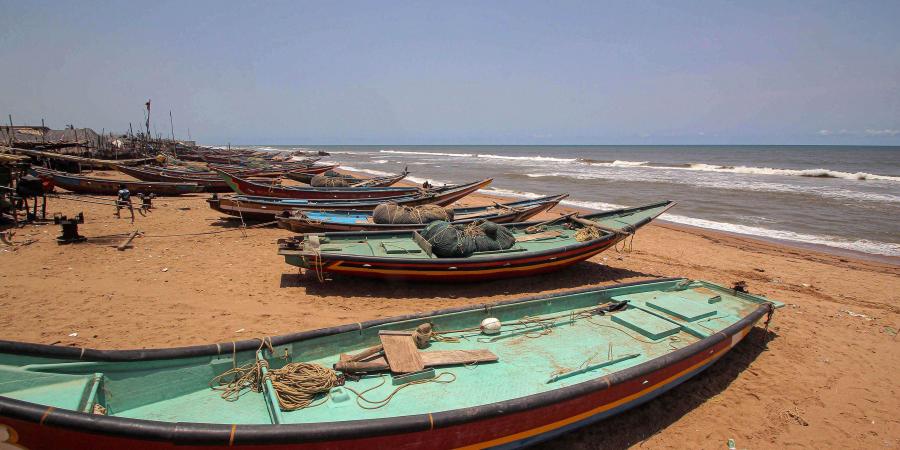
Cyclone Amphan is the second pre-monsoon cyclone to form in the Bay of Bengal in the last two years. (PTI Photo)
Cyclone Amphan hits West Bengal: All you need to know
Super cyclone Amphan is likely to hit West Bengal on Wednesday (May 20) with the severe cyclonic storm amid the COVID-19 lockdown restrictions increasing the challenges for the National Disaster Response Force (NDRF).

Super cyclone Amphan is likely to hit West Bengal on Wednesday (May 20) with the severe cyclonic storm amid the COVID-19 lockdown restrictions increasing the challenges for the National Disaster Response Force (NDRF).
The state governments in West Bengal and Odisha have been asked to suspend all railway and road traffic. All fishermen have been asked to stay away from the coasts. Here are top 10 facts about cyclone Amphan that one must know:
- Cyclone Amphan is the second pre-monsoon cyclone to form in the Bay of Bengal in the past two years. The state of Odisha, which was praised for handling the last year’s pre-monsoon storm – Cyclone Fani, is again ready to evacuate as many 10 lakh people. The state has also set a zero-casualty target.
- US space agency NASA used the images captured by its satellite to gather the data about the temperature of the cloud top. The cloud top is the highest altitude of the visible portion of the cloud. In a blog, NASA stated that the coldest cloud top temperatures were as cold as or colder than minus 70 degrees Fahrenheit in such storms. The storms with the cloud top temperatures have the capability to produce heavy rainfall.
- According to NASA, the storm was formed over south-east Bay of Bengal on Saturday evening (May 16). It was designated as Tropical Cyclone 01B and overnight, it strengthened to a hurricane force.
- Cyclone Amphan is the equivalent of a category-5 hurricane at the Saffir-Simpson hurricane wind scale. The US space agency’s aqua satellite passed over the Indian Ocean on May 18 and gathered the water vapor data which showed the intensity of powerful tropical cyclone.
- Heavy rain lashed in few parts of Odisha on Tuesday (May 19) as the cyclone moved closer to the coasts. HR Biswas, the director of Meteorological Centre, Bhubaneswar said that in the morning, the cyclone lay centred over the west-central part of Bay of Bengal, about 520 km south of Paradip (in Odisha), 670 km south-southwest of Digha (in West Bengal) and 800 km south-southwest of Khepupara in Bangladesh.
- The Indian Meteorological Departmnet (IMD) has anticipated extensive damage to livelihood, especially damage to houses beside the coastlines. It has also anticipated potential threat from flying objects. The railway and road traffic will also be disrupted.
RELATED NEWS: Amphan: Shah promises help to Odisha, Bengal; IMD alert to fishermen
- In view of the cyclone, the Border Security Force (BSF) has moved three of its floating border posts or ships and 45 other patrol boats deployed to guard the India-Bangladesh riverine front in the Sunderbans and the Icchamati river in West Bengal for providing safety. These are being used by the south Bengal frontier of border force to guard around 350 km of the riverine border in the area.
- SN Pradhan, NDRF Chief said that 15 teams are deployed in Odisha and they are carrying out communication drives, awareness drives, and evacuation program. 19 teams are deployed in West Bengal, and two teams are in standby.
- NDRF has kept additional backup of sis battalions – 11, 9, 1, 10, 4, 5 have been identified for the same. 11 battalion are deployed in Varanasi, nine in Patna, one in Guwahati, 10 in Vijaywada, five in Pune, and four in Arakkonam. Each battalion has four teams, so there are 24 teams on standby.
Next Story


